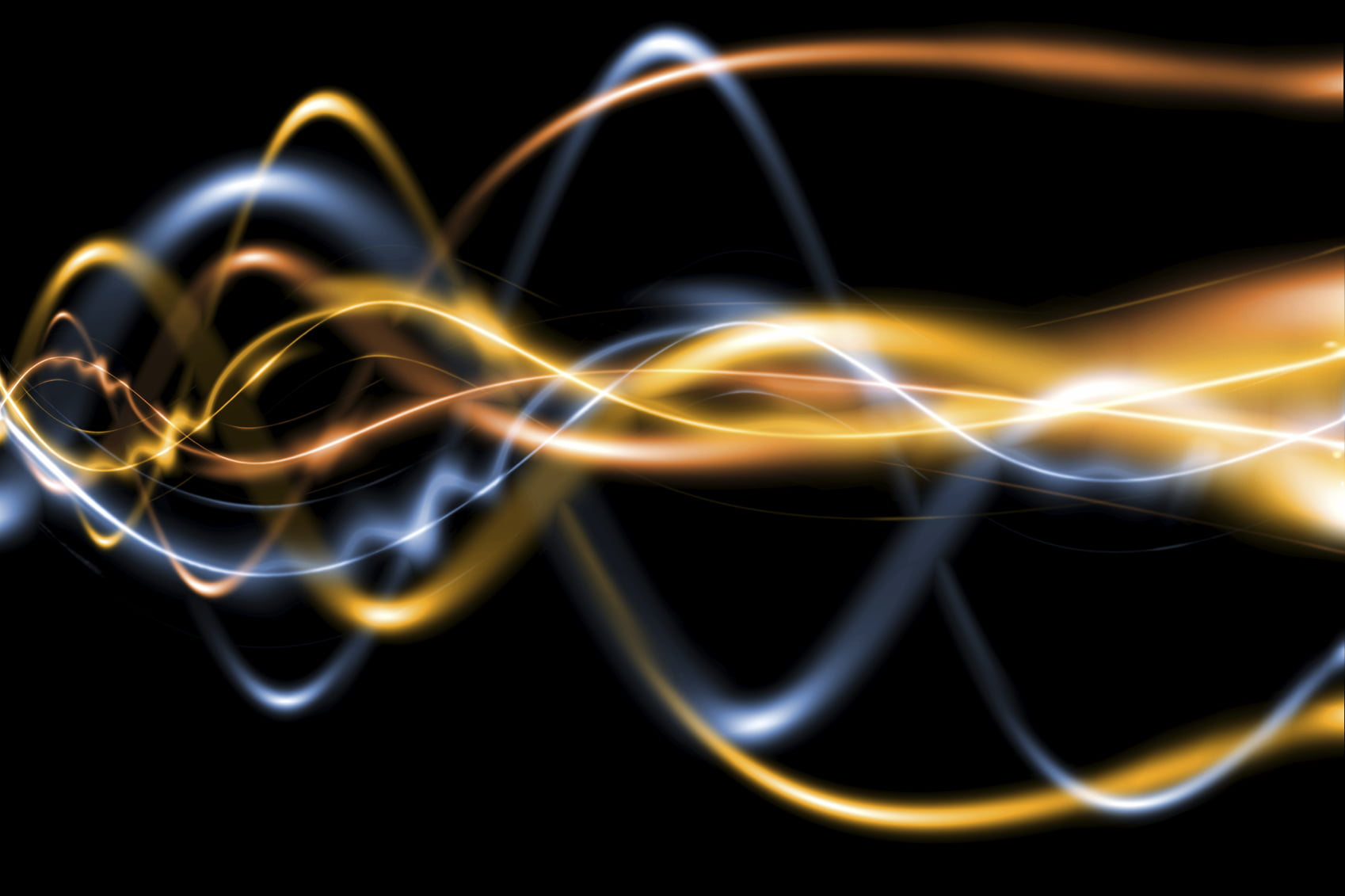It’s the time of year for saving money!
In Part 9 of this series, I picked-up from some previous thoughts about resonance as it affects a phono cartridge and expanded them to cover the whole audio playback system. And then, because resonances must always be stimulated by something, and because that stimulation isn’t always limited to just the energy provided by the motion of the turntable as it , quite literally, “drags a rock (the cartridge’s diamond stylus) across plastic (the groove in a vinyl disc) to make music”, I went on to talk about “feedback”, both “acoustic” and “mechanical” as mechanisms for transferring energy through and back into the system to act, either by themselves or as a stimulus to resonance.
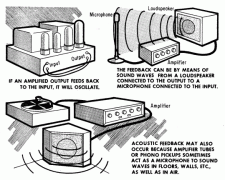 There are times when feedback can be a good thing. As I wrote last time, for example, it’s quite common for designers of even the very best amplifiers, preamps, receivers, and other elements of our audio systems to feed a portion of the output energy of a circuit back into it out-of-phase to correct for distortion or other errors or to improve circuit stability. Purposeful feedback has also been built into speakers (particularly sub-woofers) in the form of motion-sensing devices to pick up motional errors (typically over- or undershoot of the diaphragm) and correct for them electronically. Even that kind of feedback, though, isn’t perfect: Feedback can only correct for errors that have already happened, and, by that time, they’ve already happened.
There are times when feedback can be a good thing. As I wrote last time, for example, it’s quite common for designers of even the very best amplifiers, preamps, receivers, and other elements of our audio systems to feed a portion of the output energy of a circuit back into it out-of-phase to correct for distortion or other errors or to improve circuit stability. Purposeful feedback has also been built into speakers (particularly sub-woofers) in the form of motion-sensing devices to pick up motional errors (typically over- or undershoot of the diaphragm) and correct for them electronically. Even that kind of feedback, though, isn’t perfect: Feedback can only correct for errors that have already happened, and, by that time, they’ve already happened.
Except in those things just mentioned, feedback in our systems is generally NOT a good thing. We’re all familiar with what happens at some public venue, where the speakers and mic are too close together or turned up too loud: The microphone(s) pick up the sound from the speaker(s); send it on to the amplifier; which sends it, amplified even more, out to the speakers; the sound from which gets picked up by the mic; and around and around again, until the result is a deafening howl, with people clutching their ears and the sound guy diving to turn down the volume. Feedback doesn’t have to be world-destroyingly loud, though, to be a problem: Even where there’s so little of it that we can’t easily notice it as being present, it’s still muddying details, blurring transients, creating distortion and exciting resonances that can spoil our musical experience.
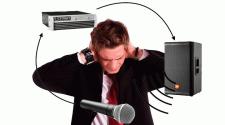 What can make feedback hard to find and fight is that the two kinds of it that I mentioned earlier – acoustic and mechanical – can be hard to tell apart and can even both be happening at the same time. Consider this as an example: Let’s suppose that you live in a house with (normal for most of the United States) a “pier and beam” foundation and a basement or under-floor crawl-space, or like me, you have your sound room above the ground floor. Unless special efforts have been taken to render it otherwise, the floor of your listening room may (as mine did), have a tendency toward “springiness”, and may “flex” as you walk on it.
What can make feedback hard to find and fight is that the two kinds of it that I mentioned earlier – acoustic and mechanical – can be hard to tell apart and can even both be happening at the same time. Consider this as an example: Let’s suppose that you live in a house with (normal for most of the United States) a “pier and beam” foundation and a basement or under-floor crawl-space, or like me, you have your sound room above the ground floor. Unless special efforts have been taken to render it otherwise, the floor of your listening room may (as mine did), have a tendency toward “springiness”, and may “flex” as you walk on it.
When you walk, your footsteps may be transmitted through the floor to the table that your record player sits on and shake it; the shaking of the table may shake the tonearm, which shakes the cartridge, which takes that as signal information and creates a big bass “bump” for each step; which gets amplified by your electronics and comes out of your speakers as a bigger bass bump, which is carried through the air to your tonearm and shakes the cartridge and starts the whole thing around and around again! Although not necessarily that spectacular, that sort of thing goes on all the time, and can create, even when it’s present at only very low levels, a constant “drone” playing along with your music. And it’s not only a problem in phono-based systems. Vibrations picked-up from the air or through mechanical contact can affect even systems with only a cd player, a network player, a server, or any of the other new music sources and no phono at all.
 The reason for this is that it’s not just the phono cartridge in your system that’s sensitive to vibration and can turn it into something that can affect the sound you hear. Does your system have vacuum tube electronics? Some tubes are notoriously “microphonic” – meaning that jiggling them (as acoustical or mechanical feedback can certainly do) will produce electronic artifacts that will be amplified, come out of your speakers, and be clearly and possibly annoyingly audible. It’s the same thing with some cables: Causing some of them – even some of the most famous and expensive ones — to vibrate can produce triboelectric or even (with certain polymeric materials) piezoelectric charges that, added to the signal that they’re carrying can add to, distort, or cancel parts of the music signal.
The reason for this is that it’s not just the phono cartridge in your system that’s sensitive to vibration and can turn it into something that can affect the sound you hear. Does your system have vacuum tube electronics? Some tubes are notoriously “microphonic” – meaning that jiggling them (as acoustical or mechanical feedback can certainly do) will produce electronic artifacts that will be amplified, come out of your speakers, and be clearly and possibly annoyingly audible. It’s the same thing with some cables: Causing some of them – even some of the most famous and expensive ones — to vibrate can produce triboelectric or even (with certain polymeric materials) piezoelectric charges that, added to the signal that they’re carrying can add to, distort, or cancel parts of the music signal.
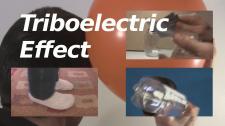 I said, last time, that there are only four ways that I know of for dealing with acoustic or mechanical feedback: 1) You can isolate either its source or the thing you want to protect from it or both; 2) you can prevent it from affecting its target by absorbing it before it gets there; 3) you can actively cancel it by applying identical out-of-phase energy; or 4) you can minimize its effect by loading it with so much mass as to render it effectively non-existent.
I said, last time, that there are only four ways that I know of for dealing with acoustic or mechanical feedback: 1) You can isolate either its source or the thing you want to protect from it or both; 2) you can prevent it from affecting its target by absorbing it before it gets there; 3) you can actively cancel it by applying identical out-of-phase energy; or 4) you can minimize its effect by loading it with so much mass as to render it effectively non-existent.
Number 1 is simple: Just move the vibration source and the thing it might affect farther apart, or put them in separate rooms or on separate stands. The less physical interaction they can have with each other – either acoustically or mechanically, the less of either kind of feedback you’ll have. Even just turning down the volume can help, too.
Number 2 is what pillows or absorbent feet are for. The purpose of any soft or (damped) springy mount is to absorb the energy of unwanted motion and turn it into heat instead of passing it along to be fed back and screw-up the sound of your system. Turntables such as those by Linn and Ariston have, for many years, quite effectively used damped springs to isolate their platterboard from its base to eliminate external energies.
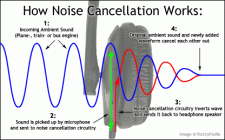 The best example I know of for Number 3 — using out-of-phase energy to cancel noise or vibration — is the noise-canceling earphones made by Bose and other manufacturers. By using built-in microphones to pick up ambient sound and a built-in amplifier to feed it to the ‘phones out of phase with the original sound, external noise is blocked, and all you hear is the music signal you want to hear. The same thing can be done – probably not as well, to protect against acoustic or mechanical feedback in a home hi-fi system, but I can’t recall (and an internet search failed to disclose) anyone who’s actually done it. (Rockport Technologies does, however, remain a prime suspect.)
The best example I know of for Number 3 — using out-of-phase energy to cancel noise or vibration — is the noise-canceling earphones made by Bose and other manufacturers. By using built-in microphones to pick up ambient sound and a built-in amplifier to feed it to the ‘phones out of phase with the original sound, external noise is blocked, and all you hear is the music signal you want to hear. The same thing can be done – probably not as well, to protect against acoustic or mechanical feedback in a home hi-fi system, but I can’t recall (and an internet search failed to disclose) anyone who’s actually done it. (Rockport Technologies does, however, remain a prime suspect.)
The last, and perhaps most common “vibration fix” in High-End audio, at least for speakers and to isolate turntable bases from their stands, is Number 4 – “mass-loading”. Newton’s Third Law of Motion says (paraphrased) that “Forces come in pairs” and that “For every action, there’s an equal and opposite reaction.” When I walk, force applied by my foot to the ground will push on two things: It will push my body forward and, at the same time, and with exactly the same amount of force, it will push the Earth back. Because equal amounts of force applied to bodies of differing amounts of mass and inertia will produce different amounts of motion, my body, with VASTLY less mass and inertia than the Earth, will be moved much more than the Earth which, having vastly more mass and inertia, will be moved practically not at all. That’s the principle that “mass-loading” is based on.
What the spikes, commonly used to mount speakers or turntables, do is to rigidly couple the speaker, turntable, or whatever else, to something – the table, the floor, the building, even the Earth – of greater mass and therefore greater inertia so that any force will have to move both objects at the same time and to the same degree and will therefore produce less (and therefore less audible) motion for any given amount of energy. It’s not the spikes, but the rigid coupling that protects against vibratory movement, and the heavier the objects and the more rigid the coupling is, the better.
All of these anti-vibration/anti-feedback techniques can be used either separately or in combination. Next time, among other things, I’ll tell you about the setup used by one well-known audio manufacturer that combined three of the four techniques to get truly great sound.
See you then!
